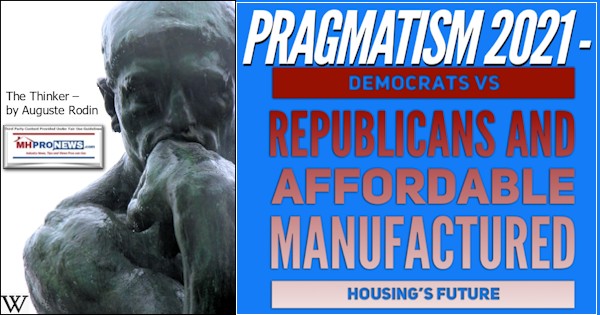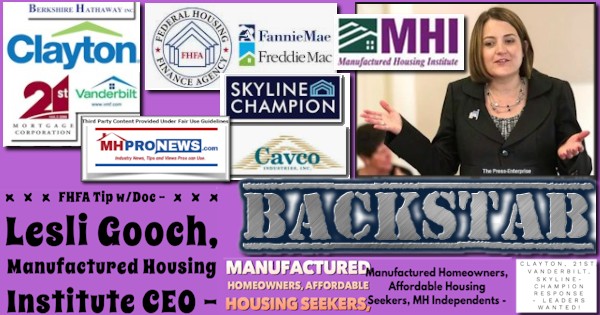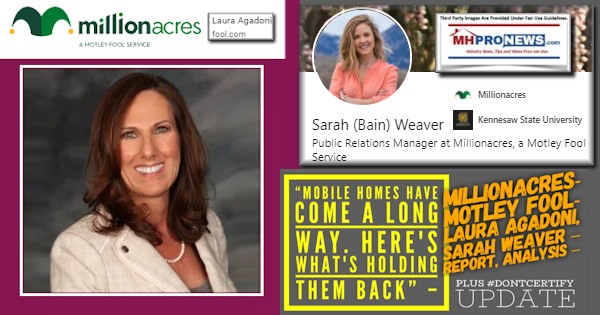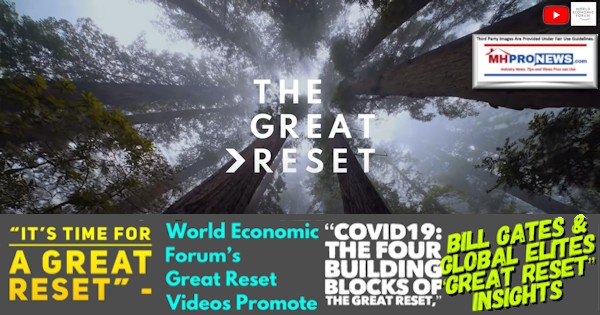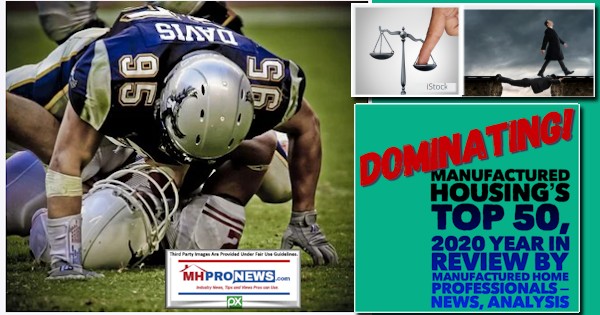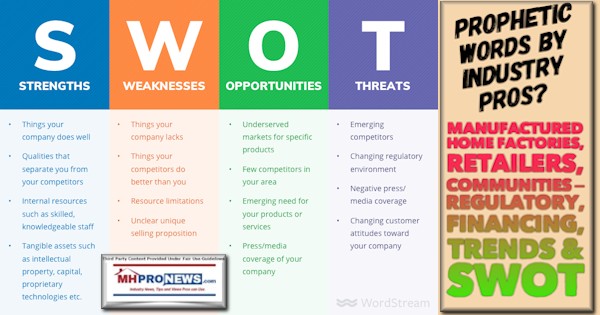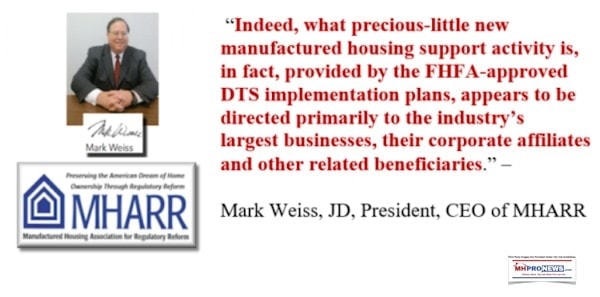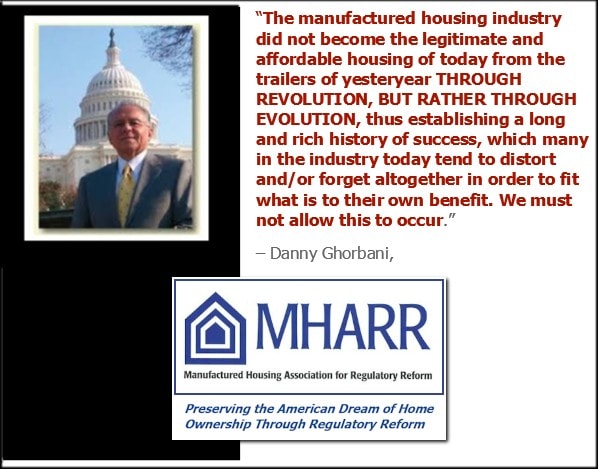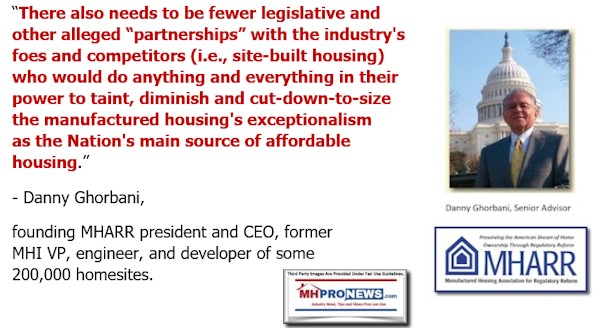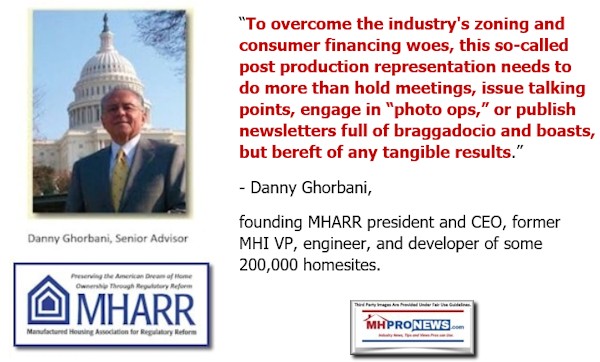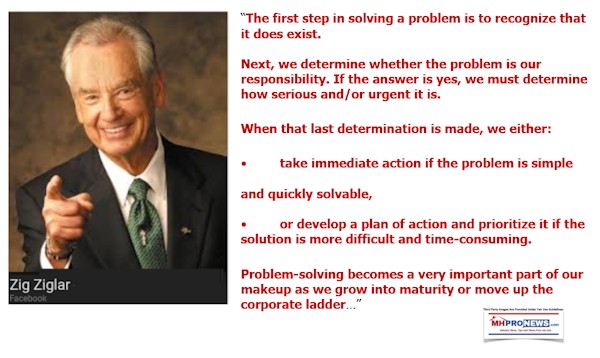“The one issue that will prohibit affordable housing in the future — not only manufactured homes, but site-built — is local zoning and covenants.” Jay Hamilton, then executive director of the Georgia Manufactured Housing Association, said that in a report published on Mobile and Manufactured Home Living News (MHLivingNews.com) entitled “Local Star Chambers Wage War on Affordable Housing” published on 12.13.2015. “These cities and smaller towns — when they pass these rules, and won’t allow a manufactured home in, there’s a segment of the population forced to rent for the long-term, many for the rest of their lives,” said Gary Adamek, in that same article. Adamek owned 3 manufactured-home retail centers in Texas at that time. Those statements and that article have proven rather prophetic. Prophecy only becomes clear through hindsight. Those problems Hamilton, Adamek and others described are still challenging manufactured housing today.
In Georgia, said Hamilton then, there used to be 31 manufactured-housing plants, each one employing an average of 250 workers. But in 2015, Hamilton indicated that there were only 5 plants operating in the same state, with perhaps 1/3rd fewer workers than in prior years. The harm done is a ripple effect that goes beyond the companies to workers, affordable home seekers, or even to taxpayers who have to foot the bill for supporting affordable housing programs that the free market once proved it is very capable of fulfilling.
Zoning and placement issues. Financing. Regulations. Manufactured home industry image. These are the problems that plagued manufactured housing then and now.
Those are the primary limitations that harm businesses. Those barriers or hurdles also limit potentially millions of manufactured home customers over time in America who might otherwise be served. A container-housing company recently told MHProNews that they think there is a potential for 20 million affordable housing units to be built in the U.S. now and in the near term. Even if their estimate was cut in half, that is still an immense market potential.
But that begs questions about concerns raised in 2015 which sadly still apply in 2021. When those trends before or since are examined and how those questions are answered hold the key to unlocking more sales and profitability.
For instance. While individuals, partners, or a corporation make their investments in a manufactured-home connected enterprise, they often pay dues to trade associations for representing their interests on issues that are supposed to benefit the trade group’s entire membership. But is that ‘Rising tide lifts all boats’ mentality of proper collective representation actually taking place? Or are a few big insider brands benefiting, while others are treading water – or worse? Several sources and in-depth reporting and analysis suggest that the later is true.
Before answering that question, consider that this interview with Nathan Smith was captured and produced prior to that article cited above. Notice that Smith was then the Manufactured Housing Institute (MHI) chairman. Among the things he pledged was that MHI and the industry would no longer be caught unprepared as it had in the past. Smith admitted that ‘the industry’ – which is often a verbal shorthand used by MHI members to describe MHI and/or its members – had often failed to be proactive. Put differently, When one of MHI’s own chairman admits that is so, is it really up for much debate?
Note that in that video interview that Smith said that the more effective place to lobby a congressional representative is while Congress is out of session and in his or her district office.
That’s fascinating on several counts. One is that it stands at odds with what MHI has been doing for some years. That tends to support the contention that some have made that MHI is using events like their fly-in for purposes other than the one stated. There are numerous takeaways from that one brief video. So long as someone compares what was said with what actually occurred, many ‘aha’ lights blubs may go off.
With that foundation, let’s now ponder what MHI, by far the industry’s largest national trade association, had to say about looming manufactured housing energy standards that could drive up costs dramatically.
In an email dated 3.10.2021 MHI said exactly nothing about that looming challenge. The text of the MHI email is linked here. That evidence stands at significant variance with what Smith pledged some 7 years ago. While Smith is no longer the MHI Chairman, he is still on the MHI board of directors. It is apparently one more example of how some key people at MHI – elected and staff – are arguably posturing on issues. They are purportedly using tactics that include paltering, mendacity, spin — and what the Capital Research Center (CRC) has periodically called “Deception & Misdirection.”
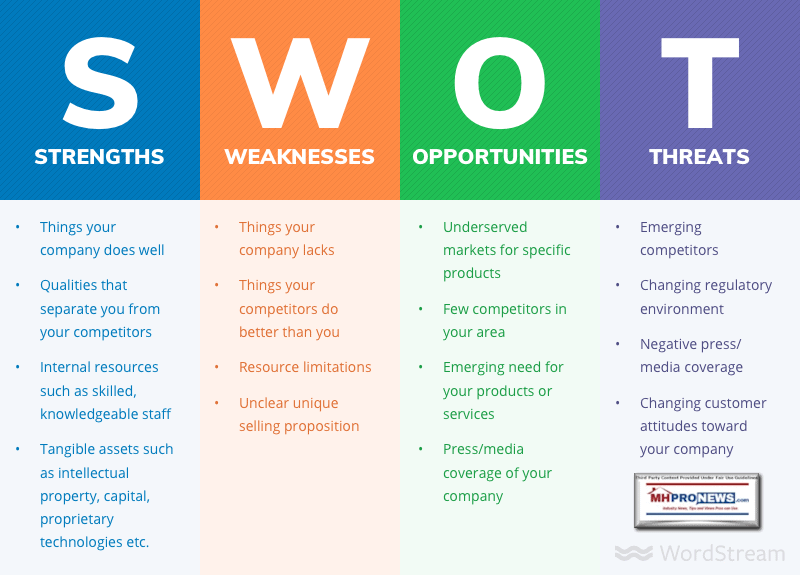
Saying one thing and doing another is what former MHI award winner Marty Lavin has warned the industry about for years. Is it mere coincidences that Lavin – a success story in his own right – and others in or out of MHI have pointed the finger in their direction several times over the course of years?
By contrast, on 3.11.2021 the Manufactured Housing Association for Regulatory Reform (MHARR) issued a detailed report on the nature of the current challenge with respect to revived and once more looming energy standards that would drive up the costs of single-section homes by some $5000 or more, and multi-section homes by perhaps double that figure. MHARR states the history of the issue, and how they plan to work to – once more – defeat a measure that they say would not benefit consumers – but would instead cost millions the opportunity to be able to afford a manufactured home.
While granular, for those who want to get into the weeds without getting lost, the MHARR report makes that possible. Once more, by contrast, the MHI email said nothing about the energy standards. It is worth remembering that MHProNews reported some years ago how MHARR stopped MHI from essentially ‘selling out’ the industry’s independents with their go along with the DOE regulations plan. MHARR’s approach was to show why the DOE proposal was flawed, and then they went to work to stop it.
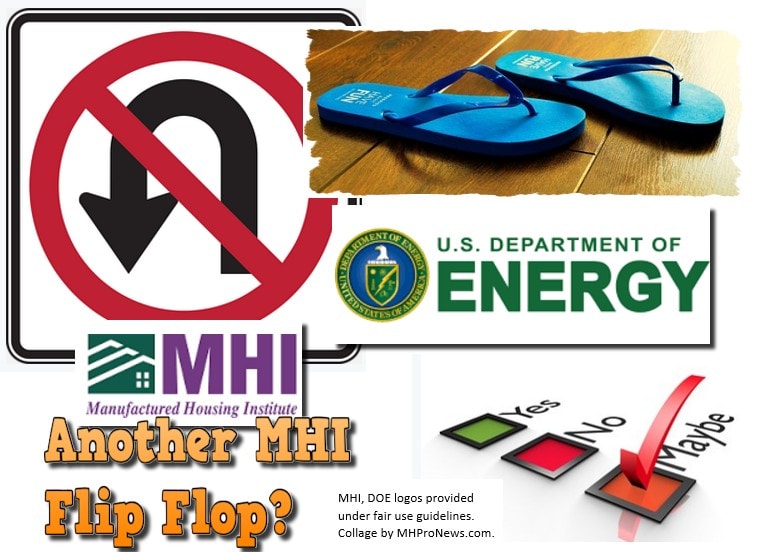
Manufactured Home Industry Veteran Thinking
Al Cole said – “Tony “gets it ” when it comes to manufactured housing. He has worked or been involved in almost all phases of the business.” The “Tony” here is L. A. ‘Tony” Kovach, co-founder of MHProNews, and MHLivingNews. Cole was a senior VP with Oxford Bank in charge of their manufactured-home lending. Oxford has made manufactured home loans for some 2 decades. As a disclosure, Cole worked with this writer in a land-lease community marketing and sales project over a period of years. We shared several meals, so his insights are both professional as well as personal.
Not to be immodest, but Cole was demonstrably correct. This writer has worked in and with retailers, communities, manufactured home producers, financial service firms, associations, and more. I managed several “street dealerships” before becoming an owner/operator of a manufactured home retail center that grew rapidly, successfully, and was finally sold for a tidy profit. That retail center was listed as being in the top 100 in the nation back in a time when there were over 20,000 retail centers in the country. Put differently, in the tiny town of Purcell, OK this writer and the team there made the top ½ of 1% of all retailers in the nation, according to the report in Automation in Housing Manufactured Home Dealer Magazine (AIHMHD). This merits a brief segue, as it matters for this analysis. This writer is not just a writer or publisher, but a seasoned industry veteran, as Cole and scores of others – including Clayton Homes – well know.
Our team accomplished top-tier level performance with:
- High customer satisfaction. Referrals were one of our leading sources of new business. There was not a single consumer lawsuit or a single letter from a lawyer on behalf of a customer with a complaint. We, as industry pros, did what we said we would do. Knowing how to deal with a customer fairly and honestly is one of several ways of making sure that they all ended up happy. That literally paid off because we had scores of referrals and a good reputation.
- Praise from our business service providers. Letters and other accolades of thanks and praise to that retail center documented that point.
- We grew during a down market when many other business were going under. That was part of what drew the attention of the AIH/MHD magazine above, the now defunct Manufactured Home Merchandiser Magazine, plus others in the industry. Our positive reputation sparked a Canadian manufactured home trade group to invite me to be their keynote speaker.
Since then, as Cole noted, this writer and our firm’s colleagues have worked with producers, retailers, communities, financial service firms, associations, and others. The outcomes were routinely positive. While no one bats 1000, hundreds of positive remarks on LinkedIn, in writing, on camera, etc. document the overall satisfaction and positive professional accomplishments. Indeed, several of our would-be rivals have made glowing statements about our work product and pro-industry efforts over the years.
That is said not to brag, but to make clear that this writer has long been and continues to be an advocate for manufactured housing, its homeowners, and potential customers alike. I’ve owned and lived in conventional housing, but also manufactured homes too. I know the product and the manufactured home lifestyle from more angles that the vast majority of professionals working in this industry. I’ve advocated at times in person with legislators and regulators as well as electronically and by phone. Our work has been positively spotlighted by several media outlets, university level and nonprofit researchers, and federal officials. These are just documentable realities.
That said, and speaking as a former MHI member and a former MHI Suppliers Division board member who was elected by my peers to serve, I can say a few things based on decades of professional experience as well as years of expert research. In my view, MHI was arguably weaponized by larger brands-which have been named in various reports that we have published. As MHI award-winner Marty Lavin put it, MHI works for the interests of those big boys. As noted, Lavin also said that people should pay more attention to what people do than to what they say.
If I was a manufactured home producer that was not one of the big three of:
- Clayton Homes (part of publicly-trade Berkshire Hathaway (BRK) conglomerate),
- Skyline Champion (SKY), and
- Cavco Industries (CVCO)…
…I would make sure that I was a member of MHARR. If I was a multi-plant operator, I might have my lowest volume producing plant with MHI for a membership – but only briefly and not because it would likely bring any direct benefit to my business. It would only be to gather data, monitor what they are arguably doing against the business interests of independent HUD Code home producers. Better yet, I might hypothetically get with some colleagues there, have one agree to do that research and data collection, and then share that information about MHI. Because from years of membership, research, and experience it became clear that MHI is not working on behalf of the industry’s independents. Nor after repeated and documented offers has MHI, their big boy brands, or their attorneys willing to publicly debate their performance.
If I were not yet a member of MHARR, I would join at the best level of support possible. Let’s note an additional disclaimer. I spent some years in the RV and campground business in the 1990s, which were successful and hailed experiences. I later learning trade show marketing, plus some other useful and profitable ventures. But all told, this writer has some 30 years’ experience in manufactured homes dating back to the early 1980s when I started in sales on old South Shields Boulevard in Oklahoma City, OK. In those days, there were over 50 HUD-Code manufactured home street retailers on a 3-mile stretch of road. It was one of the most intense concentrations of manufactured home retailing in the nation at that time. The experience then was priceless.
Today, that same stretch of road is mostly barren of manufactured home retailers.
That is said to underscore this point. As an industry veteran and expert, the case can be made that there is no other manufactured home trade group that has done more to defend the interests of manufactured housing independents than MHARR has done. But more to the point, MHARR grasps that a big part of the industry’s issues have long been from within the profession itself. A few pull quotes will illustrate that point.
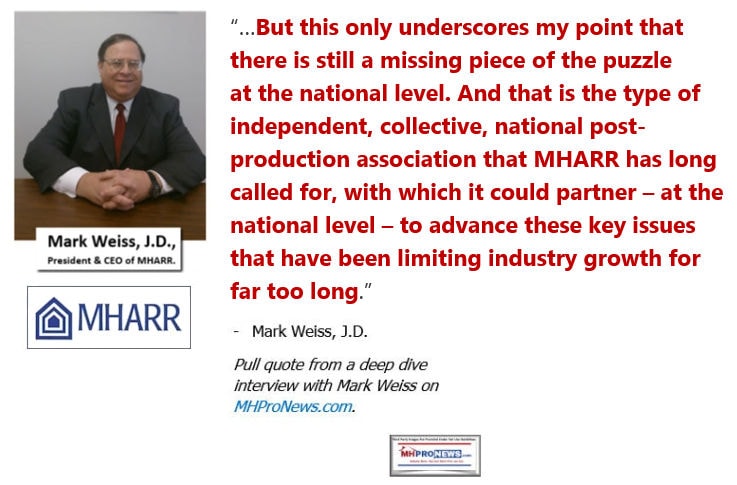
As our deep dive report yesterday made clear, there is ample evidence that MHARR is correct and that evidence comes in large measure from people that were or are in MHI, with Clayton Homes, 21st Mortgage Corp, et al. See that report, but do not skim read it. It is a careful, close reading that the step-by-step evidence based report makes the case.
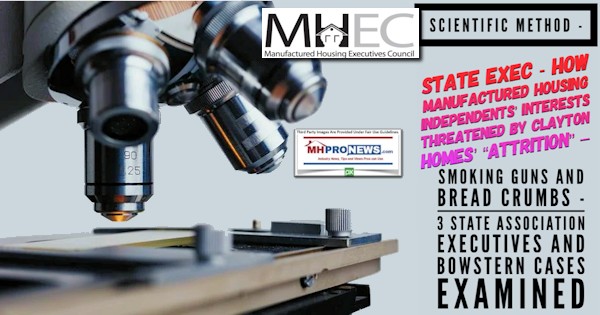
Perhaps just as important, given multiple opportunities, Clayton, 21st, Vanderbilt, Berkshire Hathaway, MHI, and some of their inside and outside attorneys have been given numerous opportunities to defend, dispute, or disprove – if they could – any fact or allegation made. There has been a deafening silence. That is not positive proof, but it does mean that our allegations stand without any serious public dispute. Also as important, an MHI member did engage in an effort to disprove our allegations. That person ended up making several useful admissions before tossing in the proverbial towel. See that public and thoughtful debate linked here.
When someone looks at the trend lines, it is obvious that manufactured home independents’ days are sadly numbered. You may be one of the larger independents. You may have several apparent strengths. But with all due respect, do not think that will save you or your firm. Old Fleetwood, Oakwood, and Champion – once giants – all ended up failing. Palm Harbor was bought out by Cavco. Old Skyline ended up merged into new Skyline Champion. The examples in the 21st century are numerous. Anyone who says differently is selling something that might be more believed by those high on drugs.
Something similar could be said of retailers or communities. Once more, see the report linked here. But ICYMI, see what third-party legal researcher Sam Strommen with Knudson Law had to say in the report linked below. MHProNews suggests this. Read Strommen’s report first, skip all of our commentary. Then, re-read it with our commentary.
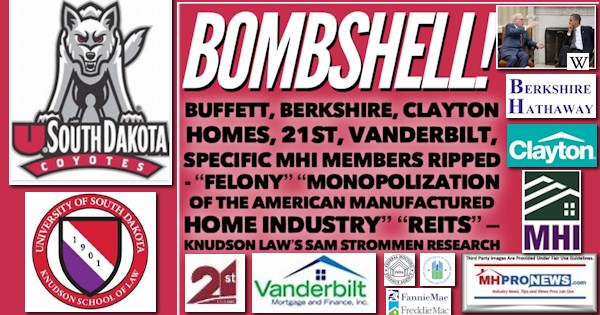
The vision of our parent company has always been to sustainably and ethically grow the manufactured home industry. When I was an MHI member, I offered in several ways – often donating my time as a consultant for free – to show MHI how they could get more financing and overcome the so-called image issue. This writer asked in meetings why MHI was not seeking enforcement of the enhanced preemption clause of the Manufactured Housing Improvement Act of 2000. The list could go on. As MHI’s reward for our offers and tips? They decided they no longer wanted this demonstrably pro-industry, pro-growth member who several of them had previously praised.
The case can be made that MHI’s insiders are smooth at deception, paltering, and misdirection. They can look you in the eye and smile. Meanwhile, they are undermining your interests and those of current and potential consumers.
The points? I’d make 4 points that – if followed – could boost manufactured home industry independents performance and profits. Then, let me encourage you to see how thoroughly MHARR has laid out their concerns about the looming energy standards that follow these four tips. Then, while you read what MHARR wrote, ponder why MHI has said nothing at all about this issue? Keep in mind what Nathan Smith pledged on camera. Compare that pledge by Smith with what in fact happened.
Manufactured Housing Independents Could Have a Bright Future, Given 4 Steps
- For those who are in production, every independent producer who is not yet in should seriously consider being in MHARR. No one has a track record of loyally fighting for independents like they do. Without MHARR, the MHIA 2000 – which they accomplished with MHI before the Berkshire move into our industry, or DTS may never have occurred. Without MHARR, the harmful DOE energy standards – along with numerous other threats from the past – would not have been avoided. Keep in mind that the Washington Post indirectly paid MHARR the highest backhanded compliment while simultaneously exposing MHI and their failures on the Pam Danner issue at HUD. Review MHARR’s track record stated in their own words be seen at this link here.
- For those in a non-production or who are vertically integrated companies, they should consider leaving MHI and any state association that will not fight for their interests. There is no logic in feeding a hand that bites yours, is there? Is there any reason to pay for MHI staff to hold parties and photo ops while your interests are being ignored or undermined? Those non-producers should begin the process of forming a post-production national trade group.
- That post-production group should do the following things, in no particular order of importance.
a) Press state and federal lawmakers to do their jobs by investigating and prosecuting as warranted each of those firms and individuals who have arguably subverted manufactured housing from within. Your tax dollars pay their salaries, why not make those tax dollars work for you in antitrust, RICO or other legal actions to punish wrongdoing as needed and warranted?
b) Press state and federal lawmakers to fully and properly enforce existing federal laws that would – if enforced – boost manufactured housing to 500,000 annual shipments or more, according to MHI’s own former president and CEO. That new post-production trade group would have the benefit of MHARR’s expertise and cooperation, because MHARR has already said so several times over the years.
C) Have one or more attorneys as needed to address with localities or other entities any problematic behavior that lies beyond the scope of federal laws that harm the interests of manufactured housing independents. Ironically, it is MHI members who have told MHProNews that this is what should occur. That noted, we have long said that we need the equivalent of a JDL – a fierce defender of manufactured housing, as well as a fierce advocate.
D) Properly promote via education and engagement the truth of manufactured homes. There should be as part of that educational/information process a clear bright-line distinction between white hat brands and black hat brands. Teach prospective manufactured home buyers why they should buy, but then also teach them what to look for and what to beware of from any company that they consider doing business with. Note: MHLivingNews began as a prototype for that concept. However, it became clear in time that MHI was not supporting that in an serious fashion, and that it was arguably MHI’s own members who were often the source of bad news that gives our industry a problematic reputation. Once that sobering reality finally sank in, MHLivingNews and MHProNews But both already exist to do what is necessary to support the efforts outlined herein. Notice too that this writer has already been video interviewed by a consumer group that allowed me to make the points that black hat brands should be avoided, and white hat independents should be embraced.
E) Set ethical standards for members that really mean something and are acted upon. Make being a member of such a post-production trade group a magnet for manufactured home industry shoppers!
F) Set standards that prevent some firm or combination of companies from turning a good post-production trade group into the next MHI. Restated, make sure that the integrity of the group is maintained for the long term.
G) Consumer Engagement Notice. We know from experience that an upset customer can often be turned into an advocate if given the proper handling. At the same time, there are instances when a third-party could be useful to deal with certain types of truly unreasonable consumers. That too might find some spot in a new post-production trade group.
H) Education for post-production association members that help them make and protect their earning power.
I) Marketing for post-production association members that help them earn more money.
4) It may seem self-serving perhaps, but more support and use of our platforms and paid services on MHProNews and MHLivingNews. We generate proven results. Furthermore, we have arguably proven ourselves to be pro-white hat independents far more than anyone else has in manufactured housing trade media. The combination of a properly functioning Production, Post-Production and Pro-White Hat Trade Media would be a nearly unbeatable combination.
But more important from the perspective of a savvy professional is how these matters connect to your and the industry’s SWOT.
Why do all four of those points matter? How are they connected to your SWOT?
Strengths. Weaknesses. Opportunities. Threats. SWOT.
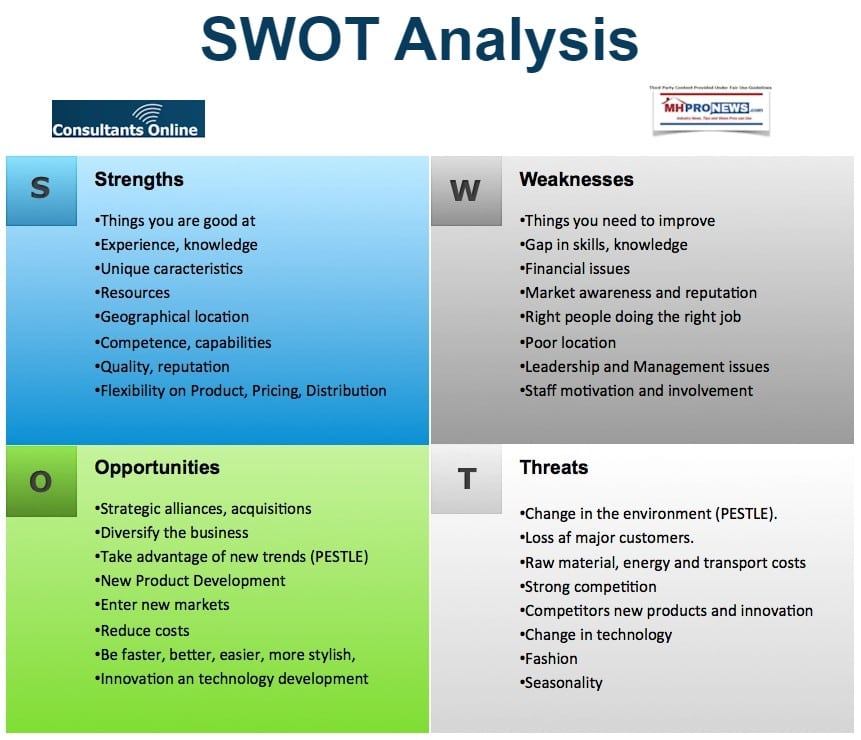
In pondering the industry’s – or your firm’s own – SWOT, the case can be made that the 4 bullets and their subsets are useful – if not necessary – in order to tap into possible strengths and opportunities while countering weaknesses and threats from outside the industry as well as within.
That four-point plan above is akin to an insurance policy that is structured so that it can also pay dividends.
With that brief 4-point plan to ponder, here is MHARR’s latest on the looming DOE energy threat, as promised.
“The Ultimate Battle Against Destructive Energy Regulation”
MHARR — ISSUES AND PERSPECTIVES
By Mark Weiss
MARCH 2021
“THE ULTIMATE BATTLE AGAINST DESTRUCTIVE ENERGY REGULATION”
So, what could be worse than destructive, excessively costly federal manufactured housing “energy conservation” standards developed through a distorted and fundamentally tainted process at the U.S. Department of Energy (DOE)? The answer? Destructive and excessively costly manufactured housing “energy conservation” standards developed through two distorted and fundamentally tainted processes – one inside of DOE and one outside. Or, put differently, two layers of destructive, unnecessary and ultra-costly regulation for the price of just one. To fully understand how this now looms (once again) as a major threat to both the industry and its lower and moderate-income consumers, and how it must be stopped by the industry as a whole, read on.
The long and continuing manufactured housing “energy standards” saga dates back nearly 15 years, to the so-called Energy Independence and Security Act of 2007 (EISA). Section 413 of that sop to “energy conservation” special interests, essentially divests HUD of its authority over manufactured housing energy standards and transfers that authority to the affordable housing experts at DOE. The same section, moreover, instructs DOE (subject to certain limited exceptions) to develop energy conservation standards for manufactured homes “based on the most recent version of the International Energy Conservation Code” (IECC) developed and maintained by the Washington, D.C.-based International Code Council (ICC). EISA, consequently, explicitly ties energy standards for “affordable” federally-regulated manufactured homes to a high-cost “international” code for site-built structures, that for years has been controlled by state and local building officials. In other words, the final structure of the IECC, through every iteration to date, has been controlled by officials that are federally preempted from regulating virtually every other aspect of manufactured housing construction and safety, and work for state and local governments that often are only too happy to exclude manufactured housing altogether, through discriminatory zoning measures.
To start with, let’s be clear that this law was, is, and always has been unnecessary, and based on the false premise that manufactured homes somehow lag in energy efficiency. As MHARR has consistently emphasized since the energy standards saga began, U.S. Census Bureau statistics show that monthly energy costs for HUD Code manufactured homes are actually less than site-built homes with respect to oil and piped natural gas, and only slightly higher than site-built homes for electricity usage. Consequently, the entire premise for new manufactured housing “energy conservation” standards is bogus, on a “whole house” basis (which is the only basis relevant to consumers). So is the energy special interests’ claim that costly new energy standards would somehow lead to “life cycle” savings that would ultimately benefit homeowners. To the contrary, a 2014 statistical analysis by the National Association of Home Builders (NAHB) (no friend of the manufactured housing industry) showed that for every $1,000 increase in the cost of a new manufactured home, more than 300,000 potential consumers are excluded from the market (a figure that would be even higher now). As a result, new “energy” standards that would add thousands of dollars to the retail cost of a new manufactured home (see, cost details below), would effectively exclude millions of potential lower and moderate-income consumers from the HUD Code market – a devastating blow to an industry that has sold fewer than 100,000 new homes per year since 2006. Moreover – and also as MHARR has continuously asserted — for the millions of potential consumers excluded from the HUD Code market by these excessive new “up-front” costs, there would be and could not possibly be any “life-cycle” savings whatsoever. For those excluded from the market altogether, there is no home, no homeownership, and no “life cycle.”
Regardless of these undeniable facts, DOE began the process to develop manufactured housing energy standards under EISA. What happened next has been explained and debunked many times by MHARR. DOE, after being thwarted by aggressive MHARR opposition between 2007 and 2011, ultimately developed a “draft” manufactured housing energy standard behind closed doors that was “impermissibly distributed” – as admitted by DOE’s Office of General Counsel (OGC) — to DOE energy special interest allies and the Manufactured Housing Institute (MHI) (the first sign of more problems to come). That 2011 “draft” standard, consistent with MHARR’s longstanding opposition, was later rejected by the Office of Management and Budget (OMB), and – again as admitted by its OGC — returned to DOE in 2013 with a directive to “start over.” Faced with the rejection of manufactured housing energy standards developed behind closed doors with non-public inputs from special interest allies, DOE and its partners devised a plan to railroad the same — or similar — proposed standards into law through a phony, contrived “negotiated rulemaking” process that would provide a veneer of legitimacy, while actually functioning as cover for DOE and its allies.
With this “wink and nod,” DOE moved forward with its phony “negotiated rulemaking.” What DOE and its collaborators did not count on, though, was MHARR’s continuing opposition, and its role as the only member of the DOE negotiated rulemaking “working group” not only to oppose that entire sham process from the start, but to demand transparency regarding both the illicit “negotiated rulemaking” process and everything that came before. This led to the entire sordid story, including MHI’s involvement, being unearthed and exposed by MHARR in August 2016 comments to DOE on the proposed standards developed through that phony, sham “process.” With MHARR thus: (1) casting the only “no” vote within the DOE “working group” (with no help from MHI, which voted “yes”) against those IECC-based standards that, according to MHARR estimates, would needlessly add thousands of dollars to the cost of a new manufactured home (see below); and (2) strenuously objecting to the adoption of any standard arising from the fundamentally tainted “negotiated rulemaking” process, DOE ultimately withdrew the 2016 proposed standard. Without consistent and aggressive MHARR opposition, however, the destructive, ultra-costly and ultimately fraudulent 2016 proposed standards would already have been law by now.
And those standards would have had a devastating impact on the industry and its ability to produce inherently affordable homes for mostly lower and moderate-income homebuyers. As estimated by MHARR, the 2016 DOE working group proposal and proposed 2016 standards, would have added more than $4,600 to the retail cost of a new single-section HUD Code home and more than $5,800 to the retail cost of a new double-section manufactured home. These figures, however: (1) are based on the 2015 version of the IECC; (2) are expressed in 2014 dollars; and (3) do not reflect any testing, compliance and/or enforcement costs under the proposed DOE standards, which were never considered or calculated by either the DOE working group, or DOE itself. Consequently, the costs estimated by MHARR during the “working group” process would necessarily be significantly lower than the comparable costs today. Moreover, even updated to 2021 dollars, those higher costs would pale in comparison to the costs that would result from following subsequent iterations of the IECC, as EISA section 413 would ultimately require. Thus, the figures noted above would only be the start of continuously spiraling price increases.
Following the withdrawal of the 2016 proposed rule, DOE, in 2018, floated a slightly less onerous standards proposal in a Notice of Data Availability (NODA). MHARR, however, objected once again, insofar as the 2018 proposal continued to rely on the same unproven and unreliable cost-benefit “data” and “analysis” derived from the fundamentally-tainted “negotiated rulemaking.” At the end of 2018, then, the DOE manufactured housing energy rulemaking was once again dead in the water, with the Trump Administration showing little or no interest in moving forward. Subsequently, though, the activist Sierra Club filed suit in federal court in Washington, D.C. to compel DOE to issue manufactured housing energy standards under EISA. The court, after rejecting DOE’s contention that the Sierra Club lacked legal “standing” to pursue its claims, entered a “consent order” which requires the promulgation of section 413 federal manufactured housing energy standards by DOE no later than May 14, 2021, and the adoption of final standards by no later than February 14, 2022. Thus, the continuing battle against unreasonable and excessively costly DOE manufactured housing “energy” standards continues and is poised to reach its “ultimate” stage, which should make this a top priority for the entire industry to stop.
To date, DOE has offered no public indication of how it plans to proceed. Nor has there been any public standards development activity concerning manufactured homes since the Department’s 2018 NODA. What is known, however, is that DOE is being pressured by “energy” special interests to simply impose the fundamentally-tainted 2016 proposed standards. For example, a special interest participant in the phony DOE “negotiated rulemaking,” the American Council for an Energy Efficient Economy (ACEEE) (with funding support from the North American Insulation Manufacturers Association which, like other “energy” special interests, is obviously seeking to “legislate” new and additional revenue for its members), has called for the rapid re-promulgation of the phony, ultra-costly 2016 proposed standard, stating that: “The quickest way to set a better energy standard for manufactured homes is for DOE to issue the current draft [2016] standard, as it should not require a new analysis, a new [Notice of Proposed Rulemaking], or a public comment period.”
Needless to say, if that were to occur, MHARR would, again, aggressively oppose any such move, based – as it has done consistently — on the fundamentally-tainted process that led to the 2016 proposed standards, the excessive cost of those standards and their almost total lack of benefits for consumers over the typical ownership tenure of a mainstream manufactured home. Moreover, given the dire consequences that those phony, ultra-costly standards would have for both the industry and its customer base, a court action to invalidate the entire fundamentally-tainted “negotiated rulemaking” process and any and all actions arising from or out of that process will need united industry support.
Meanwhile, though, an entirely new issue has emerged with respect to the EISA section 413 tie-in between manufactured housing energy standards and the IECC. Specifically, “manipulation” and “abuse” of the IECC process by energy special interests (sound familiar?) during the most recent 2021 revision cycle, which led first to an open revolt against the IECC by site-builders, and now, to significant changes to the IECC process. Those changes, however, are not even close to a cure for the fatal flaws that make the IECC totally inappropriate and unacceptable as a basis for any manufactured housing energy standards.
The IECC, until now, has been developed, maintained and updated through a “governmental code process” where the final votes on proposed changes and additions, are cast exclusively by ICC-approved state and/or local government officials (i.e., other interest groups had no say whatsoever, in the final provisions of the code). In a February 2, 2021 letter to Congress, ICC explained the IECC process as follows: “[V]olunteer government officials with experience and expertise exercise by far the most control in the process. Volunteer [state and local] government officials have the final vote on any proposed code change.” (Emphasis added). Thus, while industry and consumer stakeholders could participate in the IECC committee process, they had no vote at all on the final code, and it is the abuse of this anomaly that spurred the homebuilder “revolt” to scrap the “governmental” process and switch to an ANSI (American National Standards Institute)-based consensus standards-development process that would allow all interest groups (like those within the Manufactured Housing Consensus Committee) to vote on final proposals.
Specifically, the 2021 IECC revision process saw multiple high-cost proposals that were previously rejected within IECC committees, reinstated and adopted, during the final government-official-only vote after a behind-the-scenes campaign by energy special interests (again, sound familiar?) to lobby and pressure those government officials to cast votes in favor of the previously-rejected proposals. An NAHB ally, Leading Builders of America (LBA), explained this “manipulation” of the IECC process in a January 26, 2021 letter, stating: “For the building community, the 2021 [IECC] update is a cause for serious concern. Multiple code changes were approved that will increase the cost of a new home by up to $10,000 with only modest savings for consumers. Some of the new requirements have payback periods over 100 years. Each of these ‘high-cost-low-benefit’ code changes were twice rejected during the code development process. They were approved as a result of an unprecedented effort to manipulate the ICC’s governmental online consensus vote.” (Emphasis added). (Yet again, sound familiar?) To support these claims, LBA provided recordings of conference calls with special interest activists lobbing government official voters to follow a cheat-sheet “voting guide” showing the previously-rejected proposals the activists sought to have reinstated and adopted in the final vote.
As a result of this “political manipulation,” the ICC Board of Directors, just weeks ago, voted to convert the IECC from a government code process to an American National Standards Institute (ANSI)-based consensus process, similar to that of the statutory Manufactured Housing Consensus Committee, with equally-balanced committees and voting. Under the Board’s decision, however, this change will not become effective until the 2024 revision process begins. And even though the 2024 (and beyond) process will change because of the special interest “manipulation” now confirmed through the decision of ICC’s Board, the Board incongruously decided to keep in place not only the “politically manipulated” and thus tainted 2021 revisions adopted through the “government only” system then in place, but all of the IECC provisions previously approved through that same tainted and flawed system. The Executive Summary of the ICC Board’s decision thus states: “The 2024 IECC will start from the content of the 2021 IECC.” (Emphasis added). While thus acknowledging the validity of the claims of a fundamentally-tainted process, the ICC Board’s decision would leave the results of that tainted process in place as a springboard to further contaminate future IECC revisions that would build upon a fundamentally-tainted “foundation.”
For the HUD Code industry, this ICC Board decision is more important for what it shows than what it does. What it shows is that the IECC, developed through 2021 via a process that has been “abused” and “manipulated” to require measures that are excessively-costly and produce no positive results for consumers over a normal homeownership tenure period, is not now, never has been, and never could be a proper or legitimate basis for manufactured housing energy standards.
First, as noted above, manufactured homes are already energy-efficient. Second, no aspect of manufactured housing regulation should be based on a code that for years has been under the exclusive control of officials employed by state and/or local governments that: (1) exclude or otherwise discriminate against manufactured homes and manufactured homebuyers; and (2) have no direct experience, knowledge, or expertise regarding manufactured home construction or regulation. Third, federal law mandates that manufactured housing be “affordable” and that any and all manufactured housing regulation under authority of federal law take into consideration and maintain that affordability. The IECC, however, has never been subject to any such (or equivalent) mandate.
Thus, as emphasized by LBA, the IECC process has resulted in “pie-in-the-sky” energy mandates with extreme up-front cost impacts (costing $10,000 or more for a site-built home just in the 2021 revision) that cannot be recovered under the reasonable occupancy tenure of a site-built home or, worse yet, an affordable manufactured home. (Again, sound familiar?).
As a result, EISA section 413, tying manufactured housing energy standards to the IECC was, and is, a serious mistake that will needlessly exclude millions of lower and moderate-income homebuyers from the American Dream of homeownership, and subject still others to the miseries of homelessness and all of its costs, both individual and societal. Consequently, EISA-based manufactured housing energy standards, such as the proposed 2016 standards (or worse) must be stopped. MHARR is and always has been committed to such an effort. And given the fact that MHI has more recently recognized the destructive nature and likely impact of DOE’s 2016 proposed rule, it must also be prepared to aggressively oppose this baseless attack on the industry, its product, and its consumers.
Mark Weiss
MHARR is a Washington, D.C.-based national trade association representing the views and interests of independent producers of federally-regulated manufactured housing.
###
Additional Information, MHProNews Analysis and Commentary
If you read all of that carefully, how much of that was new information to you? Does anyone at your firm give you that level of insight on a looming regulatory issue?
As a disclosure, before progressing, the following stating the obvious disclosure is merited. MHARR is an advertiser on MHProNews. That is public. It should also be noted that MHI, Clayton, 21st, and others have been advertisers too. Meaning, we do not let additional dollars keep us from saying what needs to be said. The entire premise of our “We Provide, You Decide” © tag line was based on the fact that we presented association and other viewpoints, whether or not we agree with them.
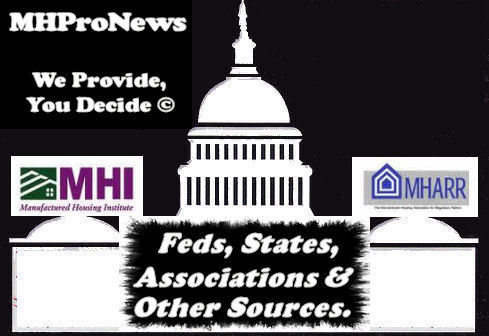
This report – as with all of our others – is independently conceived, written, and published. In the vast majority of cases, MHARR has no clue that we are about to write on a specific topic. This article is one of those cases – these are this writer’s thoughts, presentation and timing, not MHARRs. Additionally, as has been noted several times in the past, even when MHProNews and MHARR were at one point at loggerheads about specific issues, MHProNews continued to publish their reports and analysis. Why? Because they routinely make sense and are consistent.
MHARR has proven for decades that on a day-by-day basis, they aim to do what they say they will do. MHARR’s founding president has been retired for several years. Nevertheless, Danny Ghorbani – a former MHI VP – has provided several valuable historic insights that few could do.
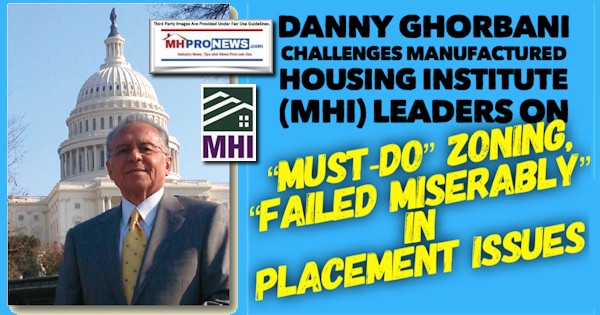
Ghorbani’s 5-decade career and post-retirement advocacy are an example of just how dedicated MHARR is to industry independents.
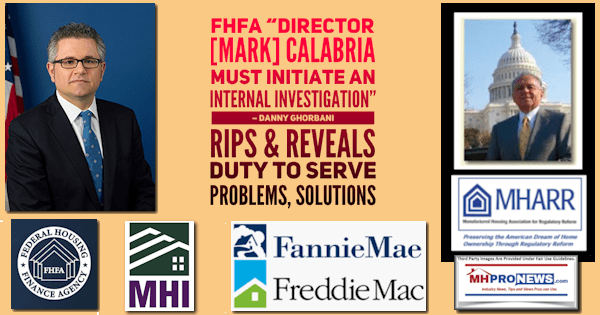
Depending on the source once turns to, there are claims that range from some 7 million affordable housing units are needed in America – that one is per the National Low Income Housing Coalition – to that enormous claim by that container housing firm that said in an off-the-record discussion that they believe that the market potential for affordable housing in the foreseeable future is some 20 million units. MHProNews would lean more toward the NLIHC point, but either one, is huge at our current production levels.
But even if manufactured housing ‘only’ did 500,000 new units a year, that would be over a 500 percent increase in business. That is per MHI’s former president and said on video in front of an audience of dozens of manufactured home industry professionals. That statement by Richard “Dick” Jennison begs the question. If that is the potential, why has it not be even close to being achieved by MHI?
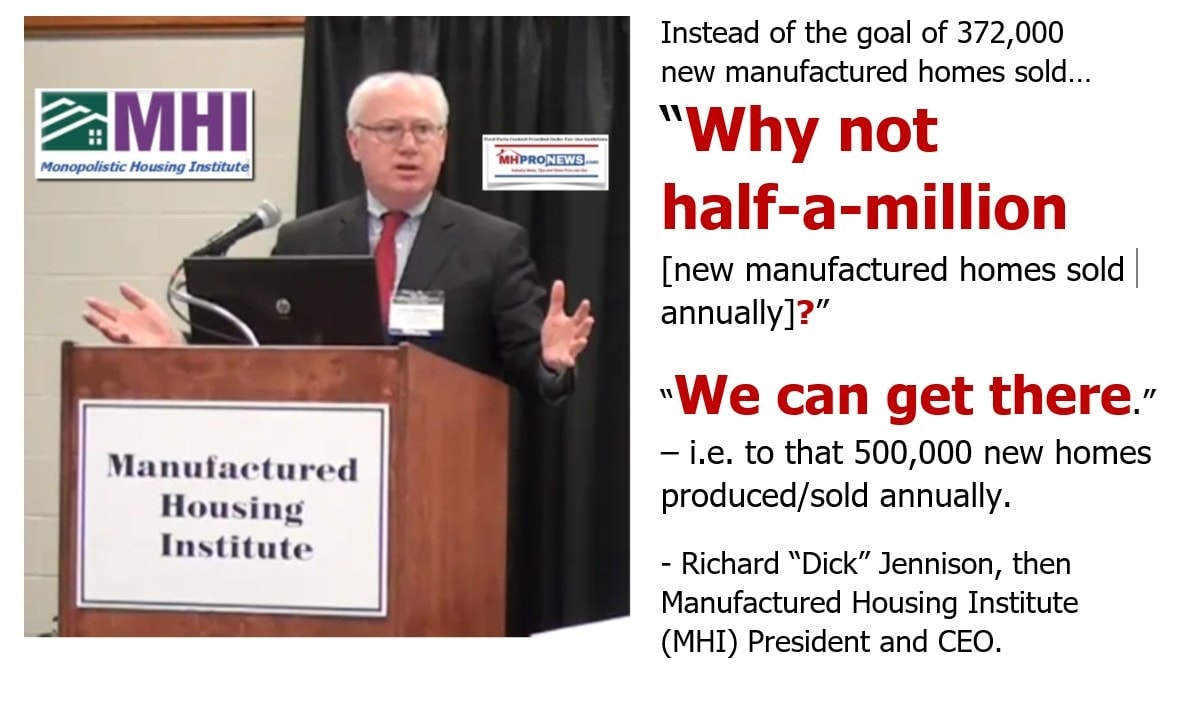
There is no logic that this writer can see in supporting MHI, unless a firm is benefiting. Unless you are on the consolidator side of the equation, that benefit is questionable if not counterproductive for independents. If someone wants to be bought out, maybe that might indeed come from an MHI member. But to get the best value for your firm, several sources have told MHProNews that Clayton and Cavco are bargain hunters. There are reasons to believe that Skyline-Champion is too.
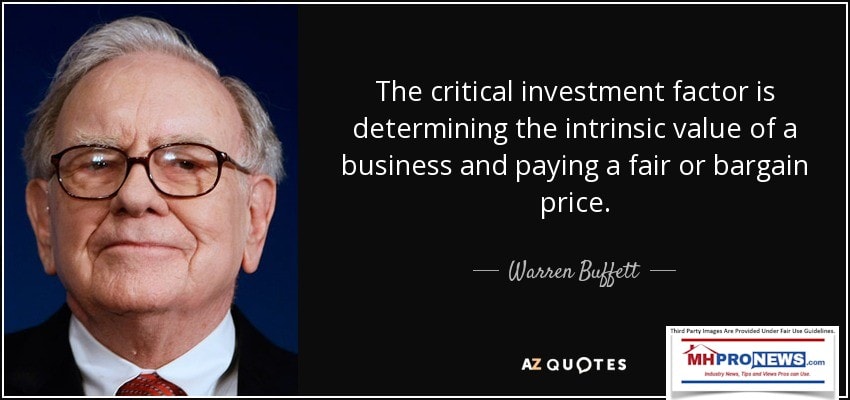
For those interested in selling it would arguably be better to sell out to someone that is not trying to haggle your value down, or hobble your value by failing to do the things that would be increasing the value of your firm.
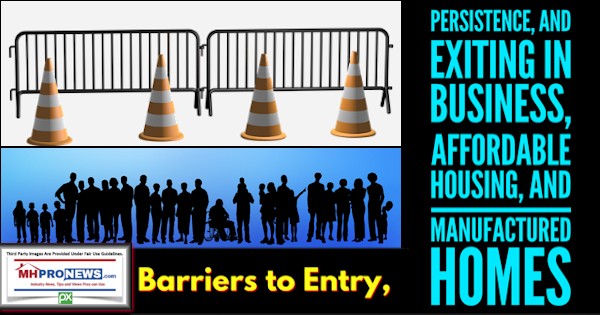
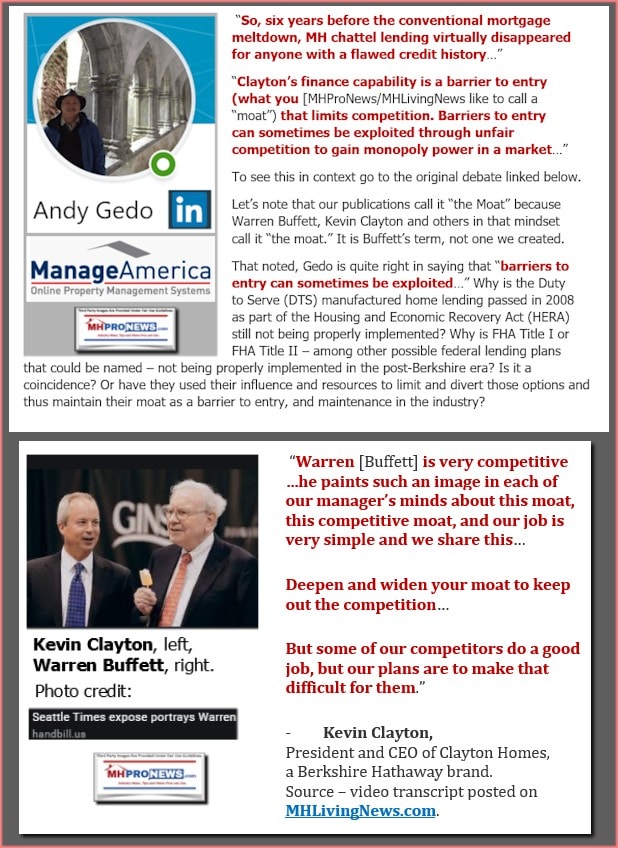
See the related reports linked herein to learn more.
Because it your SWOT, your future, and the value – or lack thereof – that is on the line. In drawing to a close, do not forget what 21st/Clayton did in 2009. Isn’t that akin in MHVille to what happened to Parler in big tech? A billion-dollar brand was the estimate that some gave to Parler when they got deplatformed. It is still an open question if the Parler comeback will work.
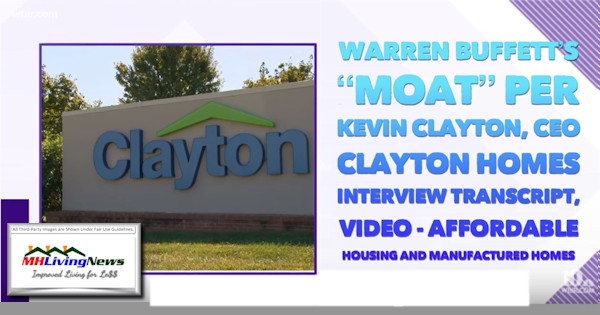
Do not be the next Parler. Do not be the next company that vanishes due to a strategic blow that you may or may not have seen coming. Well over 10,000 retailers, perhaps 20,000 (+/-) so-called “street dealers” vanished in the past 2 decades. Thousands made it through the post-1998 downturn only to fail in 2009.
Buffett makes it no secret. He is bargain hunting, as the quote shown above reminds us.
Buffett makes it no secret. He has declared war. It is billionaires – his class in this class warfare – vs. the rest. He said it, MHProNews is just quoting him.
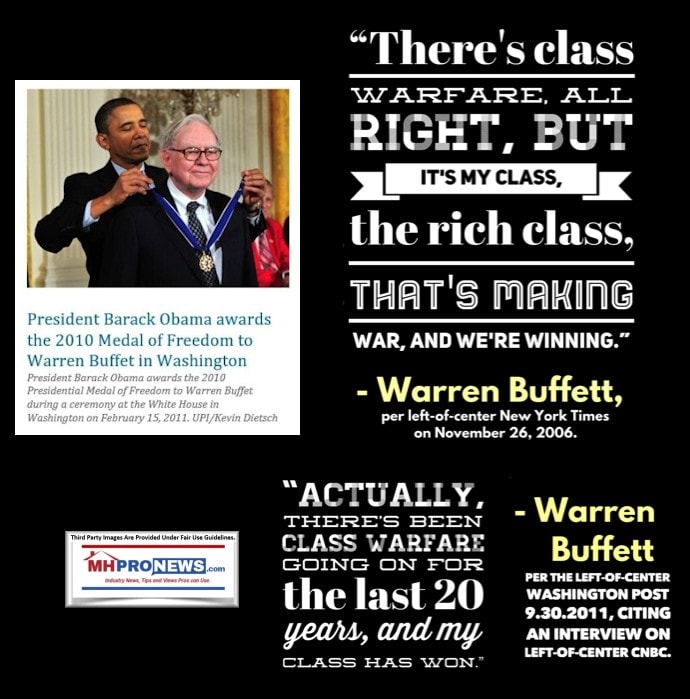
Buffett makes it no secret. And Kevin Clayton has said it, they plan to make it hard on independents. Since Clayton said that, hundreds of their own independent retailers have per Clayton’s website and Kevin Clayton’s prior statements vanished.
Keep that four-point plan posted above in mind. Because the potential for our profession is amazing. However, these trend lines of industry firms vanishing make it clear that there are real threats that ignoring them will not make said threats go away.
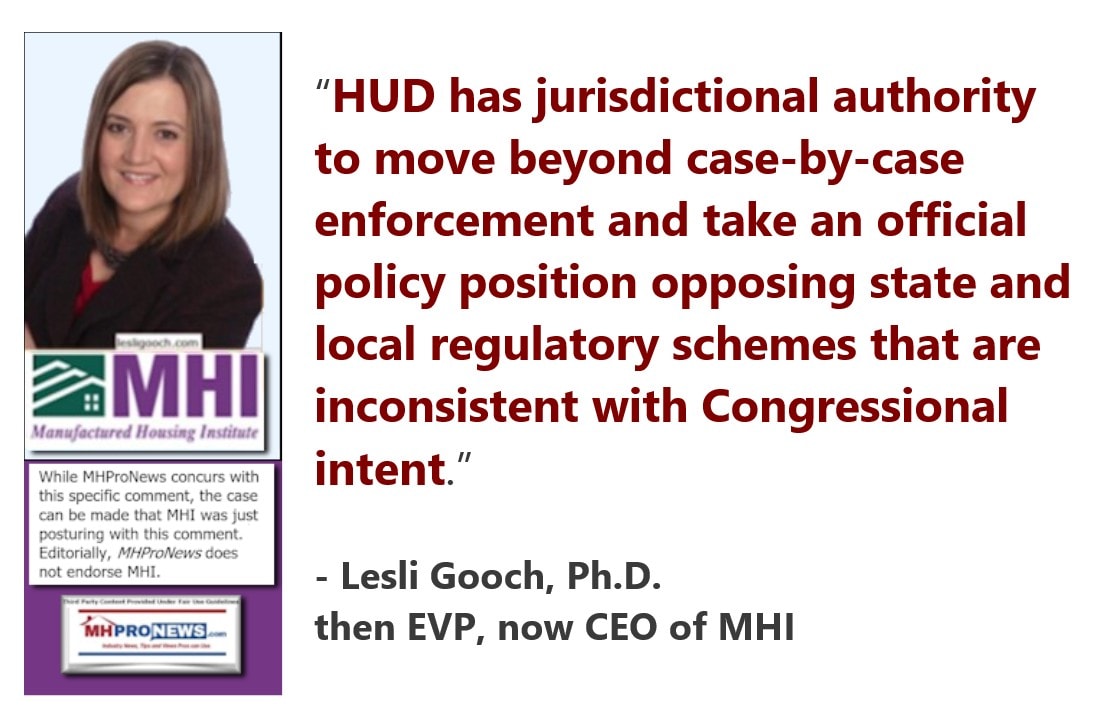
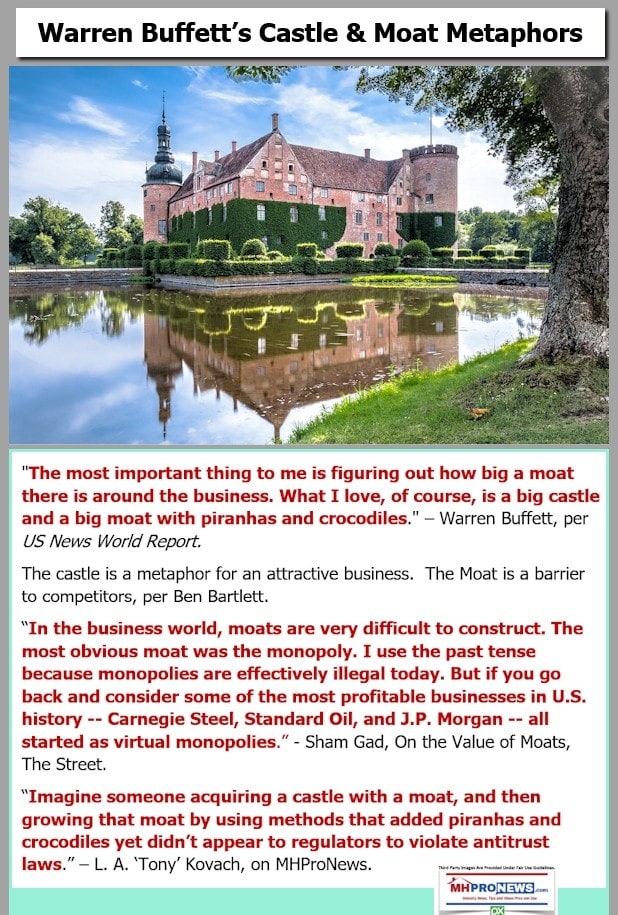
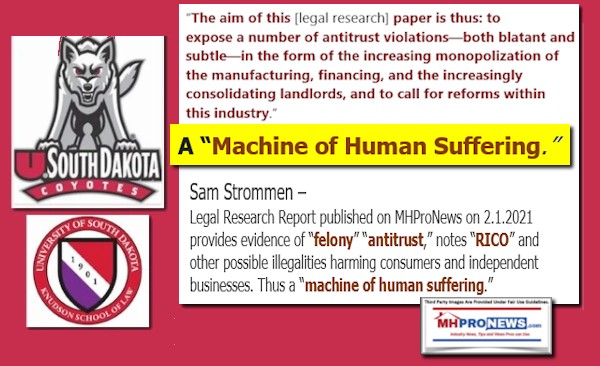
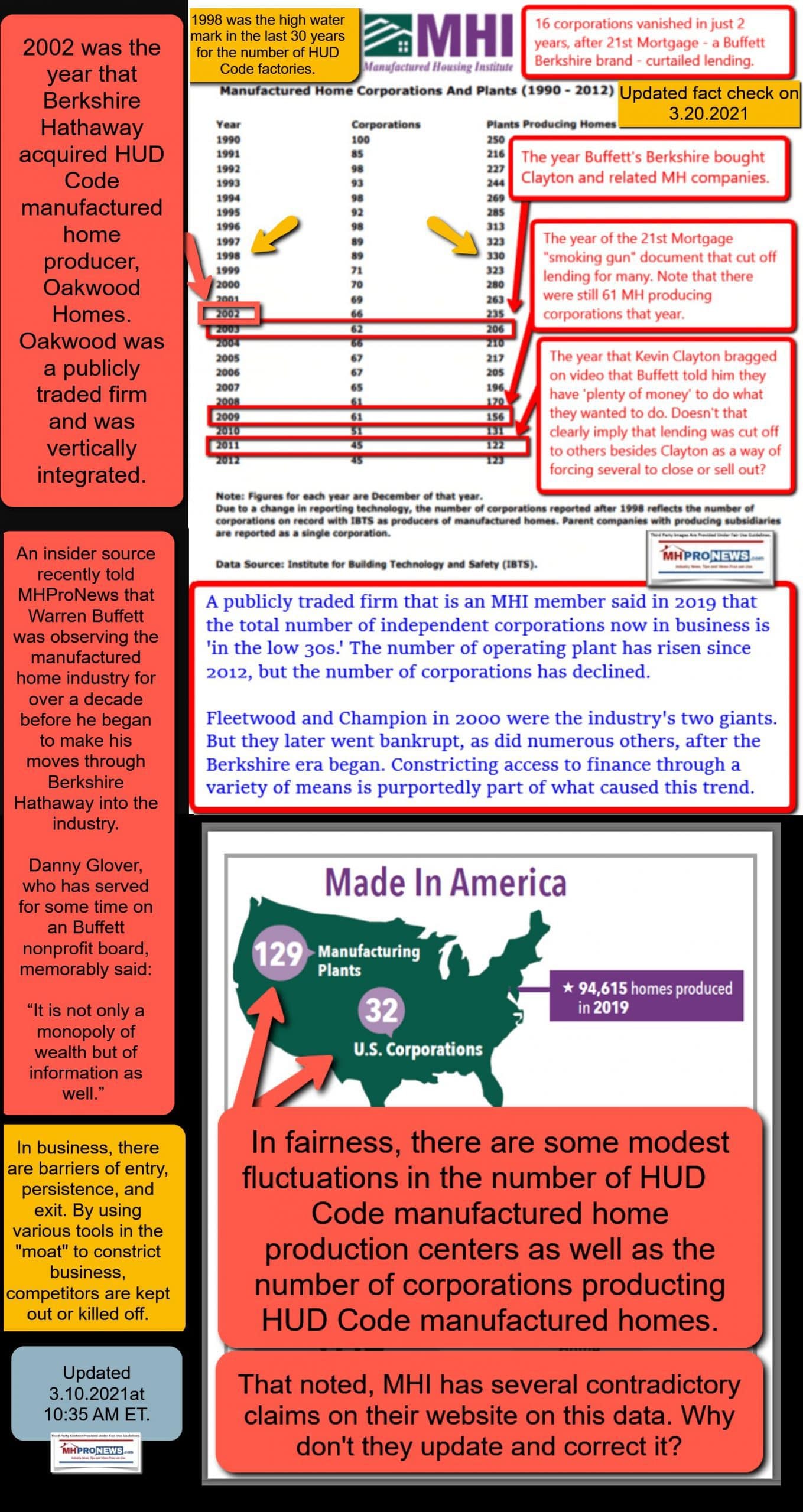
See the related reports in mind — then act accordingly.
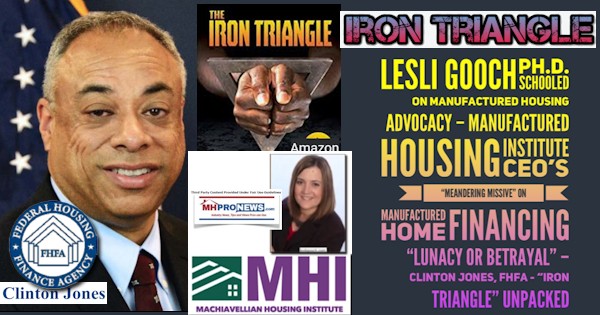

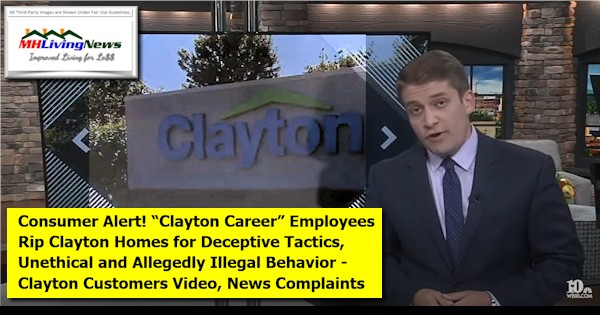
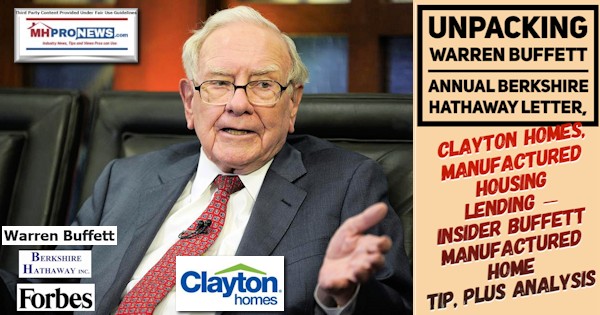


Stay tuned for more of what is ‘behind the curtains’ as well as what is obvious and in your face reports. It is all here, at the runaway largest and most-read source for authentic manufactured home “Industry News, Tips, and Views Pros Can Use” © where “We Provide, You Decide.” © ## (Affordable housing, manufactured homes, reports, fact-checks, analysis, and commentary. Third-party images or content are provided under fair use guidelines for media.) (See Related Reports, further below. Text/image boxes often are hot-linked to other reports that can be access by clicking on them.)

By L.A. “Tony” Kovach – for MHProNews.com.
Tony earned a journalism scholarship and earned numerous awards in history and in manufactured housing.
For example, he earned the prestigious Lottinville Award in history from the University of Oklahoma, where he studied history and business management. He’s a managing member and co-founder of LifeStyle Factory Homes, LLC, the parent company to MHProNews, and MHLivingNews.com.
This article reflects the LLC’s and/or the writer’s position, and may or may not reflect the views of sponsors or supporters.
Connect on LinkedIn: http://www.linkedin.com/in/latonykovach
Related References:
The text/image boxes below are linked to other reports, which can be accessed by clicking on them.
